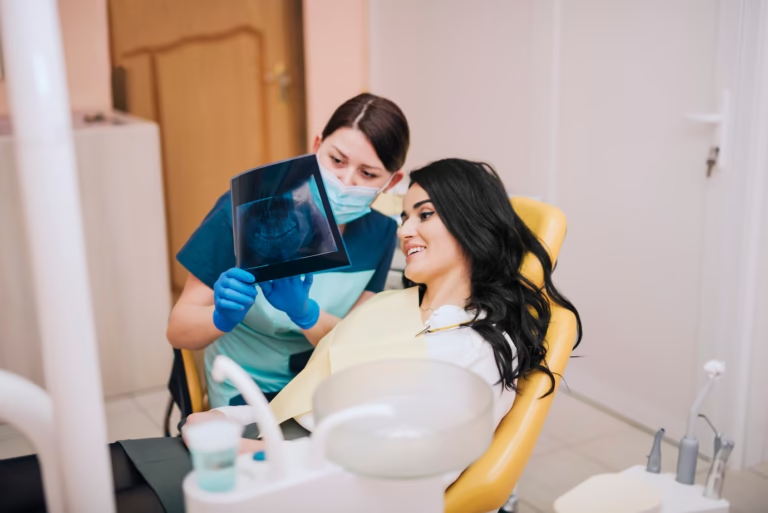Yoga Poses for Back Pain Relief: Effective Stretches to Alleviate Discomfort
Back pain is a common issue that affects millions of people worldwide. Whether it’s due to poor posture, injury, or stress, back pain can significantly impact your daily life. Fortunately, yoga offers a variety of gentle and restorative poses that can help relieve back pain, improve flexibility, and promote better posture. In this blog, we will explore effective yoga poses that can help alleviate back pain and improve your overall well-being.
Why Yoga for Back Pain?
Yoga combines physical postures, breathing techniques, and mindfulness, making it an excellent practice for addressing both the physical and mental aspects of back pain. Here’s why yoga is an effective way to manage and prevent back pain:
- Improves Flexibility: Stretching and strengthening the muscles in the back, hips, and legs can relieve tension and reduce pain.
- Enhances Posture: Many yoga poses focus on spinal alignment, which can help improve posture and prevent future back issues.
- Reduces Stress: Deep breathing and mindfulness techniques in yoga help reduce stress, which can exacerbate muscle tension and back pain.
- Strengthens Core Muscles: A strong core supports the spine and can help prevent back pain in the future.
Top Yoga Poses for Back Pain Relief
1. Child’s Pose (Balasana)
Child’s Pose is a gentle stretch that helps relax the spine, hips, and lower back. It’s a great pose to start with, especially if you’re experiencing tension or tightness in your back.
How to do it:
- Start by kneeling on the floor with your big toes touching and knees spread apart.
- Sit back onto your heels and extend your arms forward, bringing your forehead to the floor.
- Breathe deeply and relax in this pose for 30 seconds to 1 minute.
Benefits:
- Stretches the lower back, hips, and thighs.
- Relieves tension and promotes relaxation.
2. Cat-Cow Pose (Marjaryasana-Bitilasana)
This dynamic movement between two poses helps warm up the spine, stretch the back, and relieve tension. It’s great for increasing mobility and flexibility in the spine.
How to do it:
- Start on your hands and knees in a tabletop position, with your wrists aligned under your shoulders and knees under your hips.
- On an inhale, drop your belly toward the floor, lift your chest, and look slightly upward (Cow Pose).
- On an exhale, round your back, tucking your chin to your chest, and drawing your navel toward your spine (Cat Pose).
- Repeat this movement for 1–2 minutes, flowing smoothly between the two poses.
Benefits:
- Mobilizes the spine and relieves stiffness.
- Improves posture and spinal alignment.
3. Downward-Facing Dog (Adho Mukha Svanasana)
Downward-Facing Dog is a full-body stretch that targets the back, hamstrings, calves, and shoulders. It’s an excellent pose for relieving tension in the entire back.
How to do it:
- Start on your hands and knees in a tabletop position.
- Lift your hips toward the ceiling, straightening your legs and bringing your heels down toward the floor (don’t worry if your heels don’t touch the floor).
- Keep your head between your arms, and lengthen your spine.
- Hold for 30 seconds to 1 minute, breathing deeply.
Benefits:
- Stretches the entire back and legs.
- Relieves tension in the lower back and promotes overall flexibility.
4. Sphinx Pose (Salamba Bhujangasana)
Sphinx Pose is a gentle backbend that stretches the lower back and spine. It helps improve posture and relieve pressure from the lower back.
How to do it:
- Lie face down on the floor with your legs extended and your forearms on the ground.
- Press into your forearms, lift your chest, and extend your spine gently.
- Keep your elbows directly beneath your shoulders and draw your shoulder blades back.
- Hold for 30 seconds to 1 minute, breathing deeply.
Benefits:
- Stretches the lower back and strengthens the spine.
- Promotes spinal alignment and improves posture.
5. Bridge Pose (Setu Bandhasana)
Bridge Pose is a great way to strengthen the lower back and glutes while gently stretching the spine. It’s also beneficial for improving posture and relieving tension in the back.
How to do it:
- Lie on your back with your knees bent and feet flat on the floor, hip-width apart.
- Press your feet into the floor, lift your hips toward the ceiling, and squeeze your glutes.
- Keep your arms by your sides or interlace your fingers under your back for added support.
- Hold for 30 seconds to 1 minute before gently lowering your hips back to the floor.
Benefits:
- Strengthens the glutes, lower back, and core.
- Relieves tension in the back and promotes better posture.
6. Seated Forward Fold (Paschimottanasana)
Seated Forward Fold is a great stretch for the hamstrings and lower back. It helps lengthen the spine and release tightness in the back.
How to do it:
- Sit on the floor with your legs extended straight in front of you.
- Inhale to lengthen your spine, and as you exhale, fold forward, reaching for your feet or ankles.
- Keep your back straight and avoid rounding your spine too much.
- Hold for 30 seconds to 1 minute, breathing deeply.
Benefits:
- Stretches the hamstrings and lower back.
- Helps release tension and improve spinal flexibility.
Tips for Practicing Yoga for Back Pain Relief
- Focus on breath: Deep breathing helps activate the parasympathetic nervous system, promoting relaxation and relieving muscle tension.
- Move gently: Avoid forcing yourself into deep stretches. Move slowly and gently, especially if you’re new to yoga.
- Listen to your body: If any pose causes pain or discomfort, ease out of it and try a modified version.
- Consistency is key: Practicing these poses regularly, even for just 10–15 minutes a day, can significantly improve back pain and prevent future discomfort.
Conclusion
Yoga is an effective, low-impact practice that can help alleviate back pain, improve posture, and promote relaxation. Incorporating these yoga poses into your daily routine can help reduce discomfort, increase flexibility, and prevent future back issues. Remember to always listen to your body and consult with a healthcare professional if your back pain persists or worsens.
Share this:
- Click to share on Facebook (Opens in new window) Facebook
- Click to share on X (Opens in new window) X
- Click to share on LinkedIn (Opens in new window) LinkedIn
- Click to share on Reddit (Opens in new window) Reddit
- Click to share on X (Opens in new window) X
- Click to share on Pinterest (Opens in new window) Pinterest
- Click to share on WhatsApp (Opens in new window) WhatsApp







